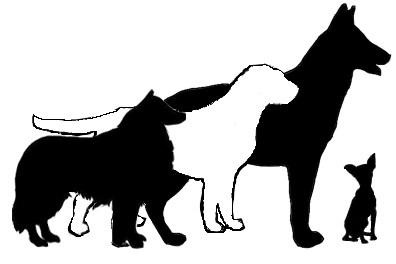Saying “No” in Dog Training
- Paw Pack Dog Training
- Apr 16, 2020
- 3 min read

Have you ever put together a jigsaw puzzle?
You lay out 500 pieces on the table and start to put them together. Sometimes you pick up a piece and it fits perfectly. Other times, you flip the piece around several times, maybe even try to jam it into another piece, but it just doesn’t fit. You put it down and find another piece. What would happen if every time you picked up the wrong piece, I said “No”, Every Single Time? In a 500 piece puzzle, I’m going to guess that you pick up the wrong piece very many times – well over 500. Would you find me saying “No” helpful? Are you learning how to do the puzzle faster? Better? Are you enjoying your puzzle? Why not?
Because the fact that the piece didn’t fit is what tells you that it’s the wrong piece. You didn’t need me to tell you that. The consequence is more than enough information. So what does saying “No, Ehh, Wrong, or Tssst" do? It creates frustration, annoyance, and perhaps even anger – for both of us. Yikes! That’s not what this is about. The same is true for you and your dog. While your dog is learning, the positive, reinforcing consequence of his behavior lets him know whether he’s right. When he doesn’t hear the marker (word or clicker) and doesn’t get reinforced, he knows he should try again. Just like you know to pick up another puzzle piece.
From today forward, when you are teaching your dog a behavior/skill, toss out the “No, Ehhh, Wrong, Tsst, etc.” and let your positive, reinforcing consequence give your dog the information he needs. Your dog will understand you better and you will be far less frustrated and annoyed. You’ll both be more successful and happier for it.

For example: If I am working on a long sit with a dog (sit-stay) and he gets up before I give him the release cue, I don’t say “Ehhh, No, Wrong, Tsst, etc.” First, I note how long it was before he got up. Then, I may ask for another behavior that he knows (ex: touch or down). Then I'll cue the sit. I'll make sure to release him in less time. We’ll repeat this 2-3 times at the shorter time and then I’ll add some time to the sit slowly. I’ll set him up for success so that he practices what I want, which is holding the sit. I won't ask a 2 month puppy for a 2 minute sit anymore than I would give a 500 piece puzzle to a 2 year old toddler. I will set up my puppy for success so that he learns to hold the sit longer and longer.
Some people may ask, but what harm is there in saying “No”. For some dogs, the “No!” (often said unhappily or perhaps loudly) has the same affect as in the puzzle example – it’s aggravating and frustrating. What does that mean? It means your dog is less likely to readily play this training game with you. The goal is for your dog to want to play this silly sit-game with you. If you frustrate him, why would he want to play? On the other hand, there are dogs who may be more sensitive when they hear a sharp “No!” They may slink away or roll over and show their tummies or perhaps stop playing with you all together. Sometimes it takes a lot of work to get these dogs back into the training game.
When we’re training our dogs, we are teaching them to do behaviors that aren’t necessarily “normal dog behaviors”. What dog would randomly sit for a long period of time while bunnies rush by? By positively reinforcing behaviors, by making training a fun game, we create behaviors that we want and behaviors that the dog wants to perform. We create a mutually symbiotic relationship – both humans and dogs benefit.
So toss the "No, Ehh, Wrong, or Tssst", get out the reinforcers that your dog loves, and play-train with your dog - success and enjoyment for both of you are sure to follow.




Comments